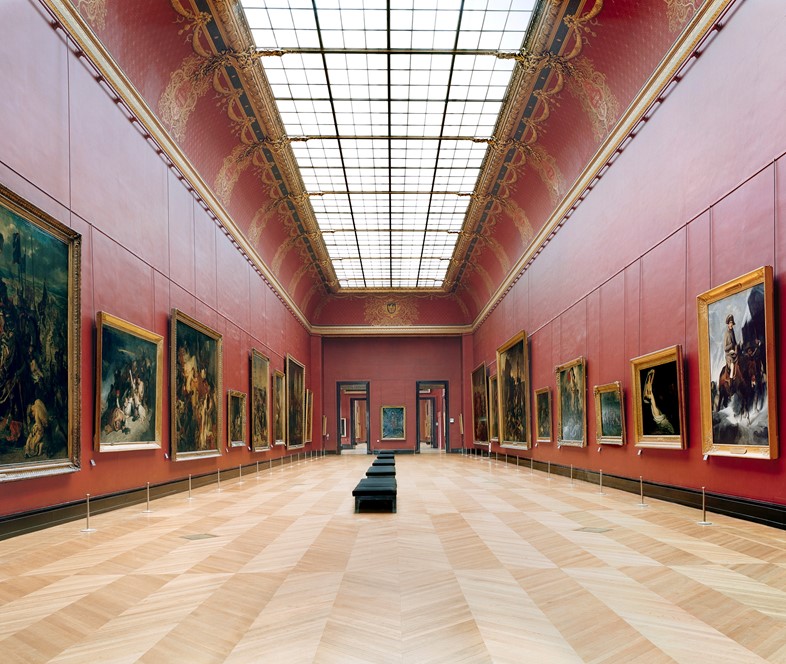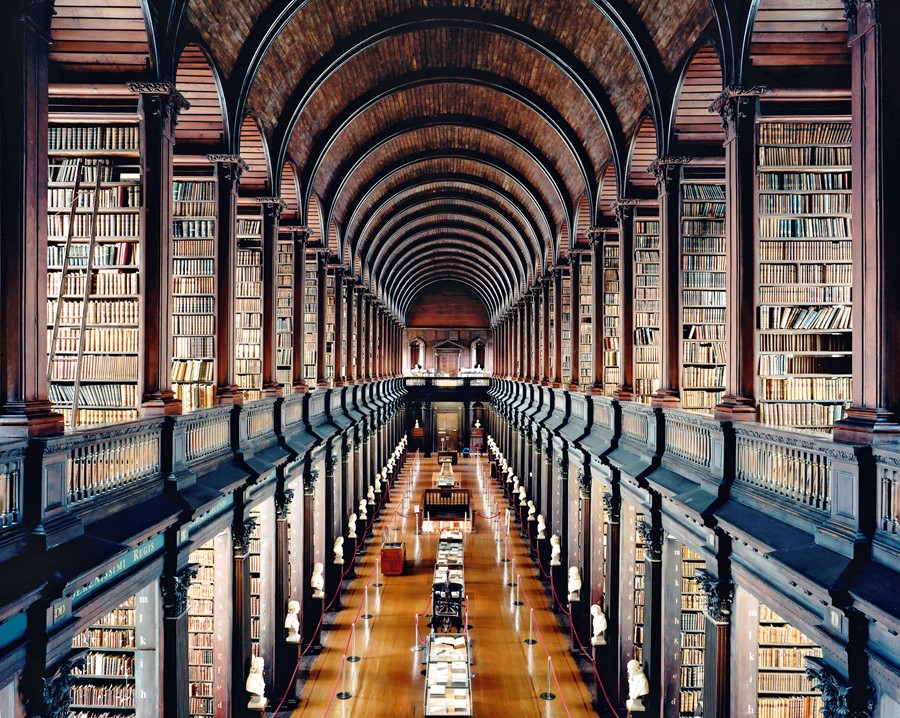Asking us to reconsider our relationship with space, Candida Höfer captures the formidable interiors of magnificent buildings the world over
Candida Höfer’s photographs are the kind you can drink in and savour ad infinitum – such is the depth of detail in her exquisite works. Part of the so-called Düsseldorf School of Photography (a group of photographers who studied at the Kunstakademie Düsseldorf in the 1970s), Höfer trained under visionary German artists Bernd and Hilla Becher, who also taught Andreas Gursky, Thomas Ruff and Thomas Struth. One of the world’s most respected artists in her own right, Höfer this week receives the Outstanding Contribution to Photography award presented by the Sony World Photography Organisation, and ten of her large-scale works will go on display at Somerset House as part of the organisation’s 2018 awards exhibition.
Höfer’s work has taken her all over the world, from St. Petersburg to Dublin, Mantua, Paris and Philadelphia, and she has captured everything from theatres to palaces, opera houses, libraries, art galleries and more. In a recent interview Höfer remarked that “it is the spaces that excite me” and she also revealed that curiosity keeps her wanting to make photographs.

While there are practical considerations that come into play when choosing where and what to photograph, a sense of intuition plays a part too, she explains. “I have spaces in my memory, I come across spaces in my reading and friends point me to spaces,” she says. “If I find the space attractive, I do more research and ask for snapshots to get an idea of how it looks.” Then it is a case of asking for permission and conditions of access, before making travel arrangements and organising equipment. Where possible, Höfer photographs spaces without people, so it is necessary to adjust to opening hours, she adds.
“There are two or maybe three distinct steps,” the artist says of her exacting working process. “The making of the photograph in the space – this means researching about the space, assessing the light situation in the room, and finding the point from where to shoot. The second step is the time in the lab, which is all about the image before me, not my memory of the shooting – going through test prints and thinking about cropping and so on until I arrive at an image I can accept as the image. The third step, which does not always follow for each and every image, is its presentation in an exhibition or a book. This is about the relationship between the spaces in the images and images in the spaces,” she adds cryptically. “It is about sequences and juxtapositions.”

Her photographs are not ‘about’ anything as such, but rather “they are images as images” in the sense of being art for art’s sake, perhaps, intended to be enjoyed visually, we could say. What we see in the images is up to us, says the photographer. “Revelation is up to the viewer. All that the medium of photography can do is slow down the gaze and give an opportunity of seeing something.”
While Höfer uses photography as her medium, she sees it as a tool like any other – “like a canvas, paint, and brushes”, a means to an end. On one level at least, her photographs ask us to reconsider our relationship to the spaces in which we work, learn and play. Paradoxically, it is by omitting humans or keeping their presence to a minimum, that she achieves this. “We are so used to seeing people in buildings that we tend to forget about what makes up a relationship between people and buildings. And this, I found, becomes more visible with the absence of people in the image. The viewers will use their imagination to establish this relationship and so engage in reflecting on it.”
The 2018 Sony World Photography Awards exhibition runs from April 20 – May 6, 2018, at Somerset House, London.
